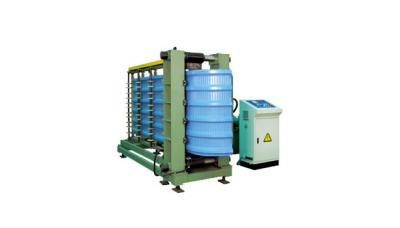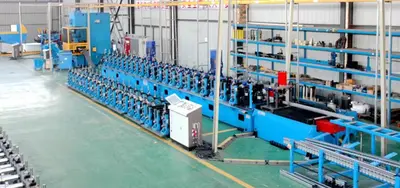The output rate of the rock wool production line relies on strategies such as technological innovation, equipment optimization, raw material selection, and industry chain collaboration. The industry is developing towards efficiency and environmental protection.
Current Status and Challenges of the Rock Wool Production Line's Output Rate
As a high-quality insulation material, rock wool has wide applications in construction, chemical industries, and other fields. However, the current rockwool production line generally suffers from low output rates, mainly due to technological bottlenecks, inadequate equipment performance, and unstable raw material quality. These factors limit the development of the rock wool industry and increase production costs.
Strategies to Improve the Output Rate of the Rock Wool Production Line
Technological Innovation
By introducing advanced production processes and technologies—such as automated rock wool production lines and intelligent management systems—the degree and precision of automation in production processes can be increased, thereby improving production efficiency and product quality.
Equipment Optimization
Upgrade and retrofit existing production equipment, such as by using energy-efficient furnaces and melting devices to reduce energy consumption and waste emissions, increase equipment utilization rates, and enhance production capacity.
Raw Material Selection
Use high-quality raw materials, such as high-purity quartz sand and dolomite, to ensure the stability and consistency of the raw materials, thereby improving product performance and production efficiency.
Industry Chain Collaboration
Strengthen communication and cooperation between upstream and downstream sectors of the industry chain to achieve resource sharing and complementary advantages. This can reduce production costs and improve market competitiveness.
Future Development Trends of the Rock Wool Production Line Industry
With the continual increase in global demands for environmental protection and energy-saving, the rock wool industry will experience more development opportunities. In the future, rock wool production lines will focus more on efficiency, environmental protection, and sustainable development. Meanwhile, with continuous technological advancements and market expansion, rock wool products will become more diversified and personalized to meet the needs of various fields.
In conclusion, improving the output rate of the rock wool production line is one of the critical directions for the industry's development. Strategies like technological innovation, equipment optimization, raw material selection, and industry chain collaboration can effectively enhance the production efficiency and product quality of rock wool, promoting sustainable development in the industry. Concurrently, with ongoing market expansion and technological progress, the rock wool industry will embrace even broader development prospects.


 CN
CN
 EN
EN
 fr
fr  de
de  es
es  it
it  ru
ru  pt
pt  ar
ar  th
th  pl
pl  ro
ro 







 Call us on:
Call us on:  Email Us:
Email Us:  #1809, Jianhu Rd, Keqiao, Shaoxing, Zhejiang, China
#1809, Jianhu Rd, Keqiao, Shaoxing, Zhejiang, China 